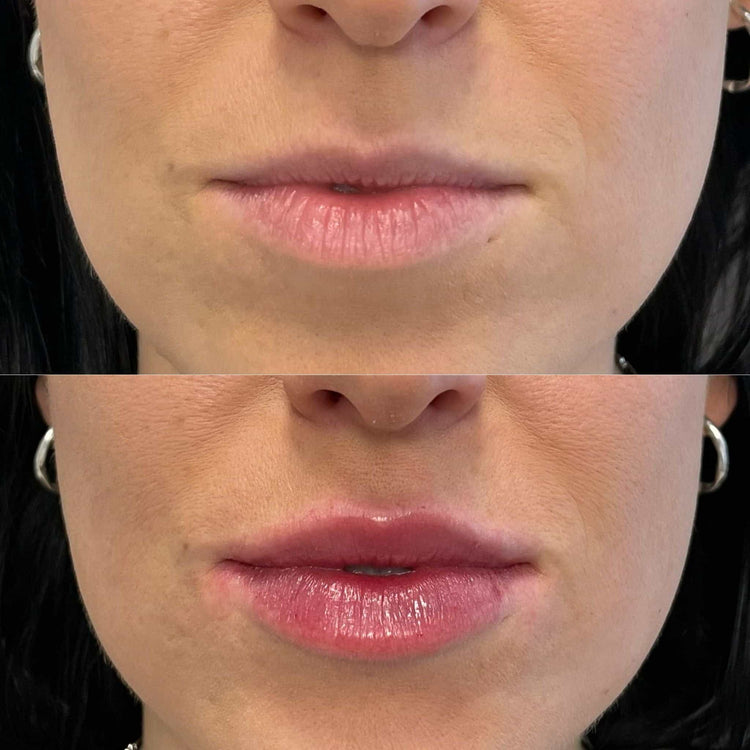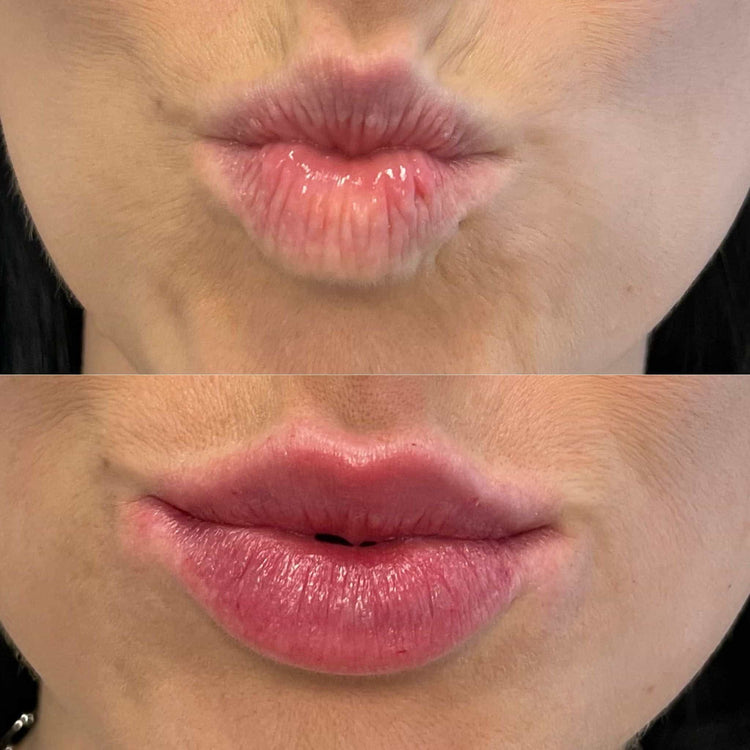Understanding Lip Enhancement Procedures
Lips play a significant role in facial aesthetics and can dramatically enhance one’s appearance. In recent years, lip enhancement procedures have gained immense popularity, allowing individuals to achieve fuller, more defined lips. This guide aims to provide UK residents with a comprehensive understanding of lip enhancement options, potential risks, and essential factors to consider before undergoing any procedure.
Types of Lip Enhancement
Lip augmentation procedures utilize various techniques to increase lip volume, improve shape, and create a more youthful or sensual appearance. The most common method is dermal filler injections, which involve using hyaluronic acid-based substances to plump the lips. Hyaluronic acid is a naturally occurring substance in the body that attracts and retains water, providing temporary fullness and hydration.
Another option is collagen lip augmentation, where collagen, a protein found in connective tissues, is injected into the lips to add volume. However, collagen injections are less common now due to potential allergic reactions.
Permanent lip enhancement options, such as fat grafting or silicone implants, are available but carry more risks and require careful consideration.
Risks and Complications
Before deciding on lip augmentation, it’s crucial to understand the potential risks and complications associated with each procedure. Dermal filler injections are generally considered safe when performed by a qualified practitioner, but possible side effects include swelling, bruising, redness, and lumps. In rare cases, more serious complications like infection or vascular occlusion (blockage of blood vessels) can occur.
Collagen lip augmentation carries the risk of allergic reactions, as collagen is a protein that some individuals may be sensitive to. Fat grafting can result in fat absorption, contour irregularities, and infection. Silicone implants have a higher risk of complications such as extrusion (the implant moving out from under the skin), rejection, and infection.
It’s essential to choose a reputable practitioner who is experienced in lip augmentation and uses safe techniques and materials. During your consultation, discuss your desired outcome, medical history, and any concerns you may have. Ensure you understand the potential risks and benefits of each procedure before making a decision.
Choosing a Qualified Practitioner
Choosing a qualified practitioner for lip enhancement is crucial to ensure safety and achieve desired results. Look for practitioners who are licensed and experienced in performing aesthetic procedures. Check their credentials, certifications, and professional memberships, such as those with the British Association of Aesthetic Plastic Surgeons (BAAPS) or the Joint Council for Cosmetic Practitioners (JCCP).
It is also important to inquire about their experience specifically in lip augmentation procedures. Consider reading patient testimonials and reviews to gain insights into the practitioner’s expertise and patient satisfaction. Don’t hesitate to ask questions during your consultation to ensure you feel comfortable and confident in their abilities.
During the consultation, discuss your desired outcome, medical history, and any concerns you may have. A reputable practitioner will listen carefully to your wishes, provide realistic expectations, and explain the procedure in detail, including potential risks and benefits. They should also address any questions or anxieties you may have.
Preparing for Lip Enhancement
Enhancing lips can significantly boost facial aesthetics, creating a more youthful and alluring appearance. Various techniques are available to achieve fuller, more defined lips, each with its own set of considerations. Understanding the options, potential risks, and the importance of choosing a qualified practitioner is crucial for safe and successful lip enhancement.
Consultation Process
The consultation process is an essential step before undergoing any lip enhancement procedure. It allows you to discuss your goals and expectations with a qualified practitioner, who can assess your suitability for treatment and recommend the most appropriate option based on your individual needs and anatomy.
During the consultation, be prepared to provide information about your medical history, any medications you are taking, and previous aesthetic procedures you have undergone. It is also important to discuss your desired outcome, whether it’s subtle enhancement or a more dramatic change in lip shape and volume.
The practitioner will examine your lips and facial structure, considering factors such as lip size, symmetry, and the surrounding skin. They will explain the different lip enhancement techniques available, outlining the benefits and potential risks associated with each.
Be sure to ask any questions you have about the procedure, recovery process, and expected results. It is crucial to feel comfortable and confident in your practitioner’s expertise before making a decision about lip enhancement.
Pre-Treatment Instructions
Preparing for lip enhancement involves understanding the procedure and taking steps to ensure a safe and successful outcome. Here are some pre-treatment instructions for UK residents:
- Consult with a qualified practitioner: It’s essential to choose a licensed and experienced practitioner who specializes in aesthetic procedures, preferably one certified by the British Association of Aesthetic Plastic Surgeons (BAAPS) or the Joint Council for Cosmetic Practitioners (JCCP).
- Medical history disclosure: Be transparent about your medical history, including any allergies, medications, and previous cosmetic treatments. This helps the practitioner assess potential risks and tailor the treatment accordingly.
- Avoid blood thinners: Discontinue using blood-thinning medications or supplements, such as aspirin or ibuprofen, a few days before the procedure as they can increase bleeding risk.
- Hydrate adequately: Drink plenty of water in the days leading up to the appointment to ensure proper skin hydration and reduce bruising.
- Avoid alcohol and smoking: Refrain from consuming alcohol and smoking for several days before and after the procedure as they can impair healing and increase the risk of complications.
The Procedure Itself
Lip augmentation procedures utilize various techniques to increase lip volume, improve shape, and create a more youthful or sensual appearance. The most common method is dermal filler injections, which involve using hyaluronic acid-based substances to plump the lips. Hyaluronic acid is a naturally occurring substance in the body that attracts and retains water, providing temporary fullness and hydration.
Injection Techniques
Dermal filler injections are typically administered using a fine needle or cannula (a blunt, flexible tube) to deposit the filler precisely into the desired areas of the lips. The practitioner will strategically inject the filler to enhance lip shape, volume, and definition. Different injection techniques may be employed depending on the individual’s goals and anatomy.
One common technique is linear threading, where small injections are made along the lip border to create a natural-looking fullness and define the Cupid’s bow (the dip in the center of the upper lip). Another technique involves injecting filler into specific points within the lips, known as “dotting,” which can sculpt the shape and enhance volume.
The practitioner will use their expertise to determine the most appropriate injection techniques based on your desired outcome and facial structure. It is important to communicate openly with the practitioner throughout the procedure, ensuring that you are comfortable with the process and the placement of the filler.
Duration of Treatment
The duration of a lip enhancement treatment varies depending on the chosen technique and the amount of filler used.
Dermal filler injections typically take between 30 minutes to an hour to complete.
Collagen lip augmentation procedures may take slightly longer, as each injection point requires careful placement.

Permanent lip enhancement options, such as fat grafting or silicone implants, involve more complex surgical procedures and usually require a longer recovery period.
Immediate Aftercare
The procedure itself involves injecting dermal fillers, hyaluronic acid-based substances, into specific areas of the lips to enhance volume, shape, and definition. This is typically done using a fine needle or cannula.
Immediately aftercare includes applying cold compresses to minimize swelling and bruising. Over-the-counter pain relievers can be used for any discomfort. It’s important to avoid touching or rubbing the treated area and to refrain from activities that may increase blood flow, such as strenuous exercise or saunas, for at least 24 hours.
Post-Procedure Care and Recovery
Post-procedure care is crucial for optimal results and minimizing potential complications. After a lip enhancement procedure, it’s important to follow your practitioner’s instructions carefully.
Expected Results and Timeline
After the procedure, you can expect some mild swelling, redness, and bruising around the treated area. These side effects are typically temporary and should subside within a few days to a week.
To minimize these side effects, your practitioner will likely recommend applying cold compresses for 20-minute intervals several times a day.

It is important to avoid touching or rubbing the treated area excessively as this can irritate the skin and delay healing. You should also avoid direct sun exposure and use sunscreen diligently.
Refrain from any activities that could increase blood flow or pressure in the face, such as strenuous exercise, saunas, or steam rooms, for at least 48 hours after the procedure.
Your practitioner will provide specific instructions regarding makeup application, eating habits, and other post-procedure care guidelines. Following these recommendations closely will help ensure a smooth recovery and optimal results.
You can expect your lip enhancement to be noticeable immediately after the procedure, although the final results may take several days to fully develop as the swelling subsides. The duration of the results depends on the type of filler used, but generally, hyaluronic acid fillers last for 6 to 18 months.
Regular follow-up appointments with your practitioner are recommended to monitor the treatment’s progress, address any concerns, and discuss potential top-up treatments when needed.
Swelling and Bruising Management
Post-procedure care is crucial for optimal results and minimizing potential complications. After a lip enhancement procedure, it’s important to follow your practitioner’s instructions carefully.
- Cold Compresses: Apply cold compresses for 20 minutes at a time, several times a day, to minimize swelling.
- Rest: Avoid strenuous activities and give your lips time to heal.
- Hydration: Drink plenty of water to keep your skin hydrated and promote healing.
- Sun Protection: Protect your lips from the sun with sunscreen and avoid direct exposure.
- Avoid Touching: Refrain from touching or rubbing the treated area excessively.
- Makeup Application: Follow your practitioner’s guidelines regarding makeup application.
Swelling and bruising are common side effects of lip enhancement procedures. They typically peak within the first few days after treatment and gradually subside over a week or two.
- Ice Packs: Applying ice packs to the lips for 15-20 minutes at a time, several times a day, can help reduce swelling.
- Elevation: Sleeping with your head elevated can minimize fluid build-up.
- Arnica Cream: Arnica cream or gel may be applied topically to help reduce bruising and inflammation.
Follow-up Appointments
Following your lip enhancement procedure, you’ll need to take care of the treated area properly to ensure optimal healing and minimize potential complications. Your practitioner will provide specific instructions tailored to your treatment, but here are some general guidelines:
Immediately after the procedure, cold compresses applied for 20 minutes at a time, several times a day, can help reduce swelling and inflammation. Avoid touching or rubbing the treated area excessively as this can irritate the skin and delay healing.
During the first few days following the procedure, you may experience some swelling, redness, and bruising around the lips. These are normal side effects and should gradually subside within a week or so. You can manage discomfort with over-the-counter pain relievers as needed.
It’s important to avoid direct sun exposure and wear sunscreen diligently on the treated area, as it may be more sensitive to sunlight for a few weeks post-procedure.
Avoid strenuous activities, saunas, or steam rooms for at least 48 hours after the procedure. These activities can increase blood flow and potentially interfere with healing.
As you heal, follow your practitioner’s instructions regarding makeup application, eating habits, and other post-procedure care guidelines.
You will need to attend a follow-up appointment with your practitioner about one week after the procedure. This allows them to assess your progress, address any concerns you may have, and ensure everything is healing as expected.
Further appointments may be scheduled depending on your individual needs and desired outcomes.
Long-Term Maintenance
Long-term maintenance for lip enhancements typically involves repeat treatments to maintain the desired look as fillers gradually break down over time. The frequency of these top-up sessions will vary depending on the type of filler used, individual metabolism, and lifestyle factors.
Touch-Up Treatments
Long-term maintenance for lip enhancements is essential for preserving your results. Dermal fillers, the most common type used in lip augmentation, are gradually broken down by the body over time.
Hyaluronic acid fillers typically last between 6 to 18 months, although individual results can vary.
To maintain fullness and shape, touch-up treatments are required. Schedule these appointments with your practitioner based on your individual needs and desired outcome. They will assess the filler’s remaining volume and recommend the frequency of top-ups.
During follow-up appointments, your practitioner may inject additional filler to replenish lost volume or adjust the shape as needed.
Regular touch-ups ensure that your lips remain plump and defined, preserving the aesthetic enhancement you achieved.
Maintaining Lip Volume Naturally
Long-term maintenance for lip enhancements is essential for preserving your results. Dermal fillers, the most common type used in lip augmentation, are gradually broken down by the body over time. Hyaluronic acid fillers typically last between 6 to 18 months, although individual results can vary.
To maintain fullness and shape, touch-up treatments are required. Schedule these appointments with your practitioner based on your individual needs and desired outcome. They will assess the filler’s remaining volume and recommend the frequency of top-ups.
During follow-up appointments, your practitioner may inject additional filler to replenish lost volume or adjust the shape as needed.
Regular touch-ups ensure that your lips remain plump and defined, preserving the aesthetic enhancement you achieved.
Achieve the perfect lip contour with lip injections by Dr. Laura Geige at It’s Me & You Clinic
